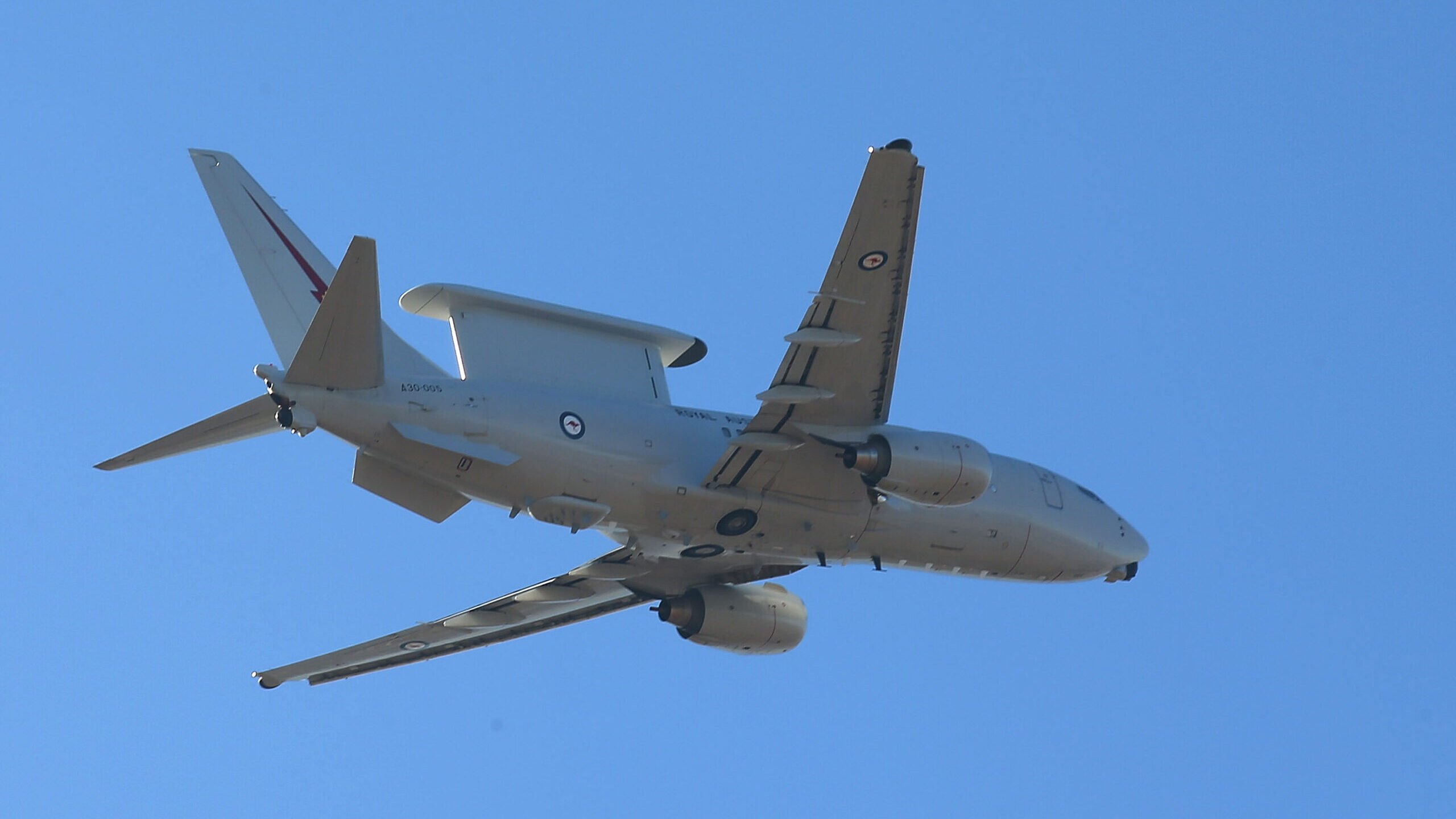
An Australian E-7A Wedgetail takes off to assist in the search for debris from missing Malaysia Airlines Flight MH370 at Perth International airport on April 7, 2014 in Perth, Australia. (Paul Kane/Getty Images)
WASHINGTON: The US Air Force could buy the first two aircraft to replace the E-3 Sentry airborne warning and control fleet as early as fiscal 2023, the service announced today.
The service is now seeking information from industry about whether companies can deliver “at least two production representative prototype aircraft, including ground support and training systems, within five years starting in FY23,” when a contract is expected to be awarded, an Air Force solicitation states.
Although the request for information doesn’t constitute a promise from the government to start a program of record, the move shows that the Air Force may be inching closer towards replacing the aging AWACS.
But a big question remains: Will the Air Force choose to sole source Boeing’s E-7 Wedgetail — an aircraft that has garnered support from top service leaders such as Air Combat Command head Gen. Mark Kelly and Air Force Pacific Command head Gen. Kenneth Wilsbach — or does the new solicitation signal a more open competition for the aircraft?
The RFI provides little information about how the Air Force could structure a new program, if it chooses to pursue one.
Instead, the services calls on companies to submit information on proposed E-3 replacement aircraft, including on key systems such as: its advanced air moving target indication radar, battle management command and control (BMC2) system, self-defense capabilities and key communications systems like Link 16 and Mobile User Objective System.
The aircraft should be able to conduct at least six missions simultaneously, such as offensive counter air, defensive counter air, air traffic control, close air support, suppression of enemy air defenses, aerial refueling or combat search and rescue. The solicitation also asks whether the proposed offer is capable of conducting maritime surveillance.
The E-7A Wedgetail is the likely forerunner for the E-3 replacement, given the fact that it’s made by American aerospace giant Boeing and operated by close US allies such as Australia and the United Kingdom.
During the US Air Force’s Red Flag air combat exercise held last month, an Australian Wedgetail flew alongside US F-22s and F-35s. That experience could help ease the way for the US to incorporate the E-7 in future operations should it ultimately chose to buy it, said Maj. Gen. Case Cunningham, commander of the Air Warfare Center, during an Air Force Association event in January.
However, the Air Force announced plans in October to put Boeing on contract to provide further technical information about the Wedgetail and provide analysis on how it could meet US requirements and standards. This additional RFI could signify that the service intends to widen its aperture before committing to the E-7.
Mike Manazir, Boeing’s vice president for defense business development, told reporters in November that he was “very confident” that the Air Force would chose the Wedgetail to replace its E-3 fleet.
“I believe they’ll be announcing sometime in 2022 that they’re going to move forward on the E-7,” Manazir said. “I think we’re going to be able to capitalize with all of our allies and bring that great capability to the United States Air Force.”
If the Air Force decides to compete the contract, other aerospace companies could step in with additional options.
During Dubai Airshow in November, Saab CEO Micael Johansson told Breaking Defense that the company is ready to offer its GlobalEye airborne early warning and control plane to the United States.
“I don’t know whether it’s really political, that they have to select US companies for that [opportunity],” said Johansson. “We will be willing to discuss [industrial] partnerships, of course around that as well. But I think we have a very competitive solution.”
Navy jet trainer fleet operations remain paused after engine mishap
One week after the incident, a Navy spokesperson says the service is continuing to assess the fleet’s ability to safely resume flight.


























